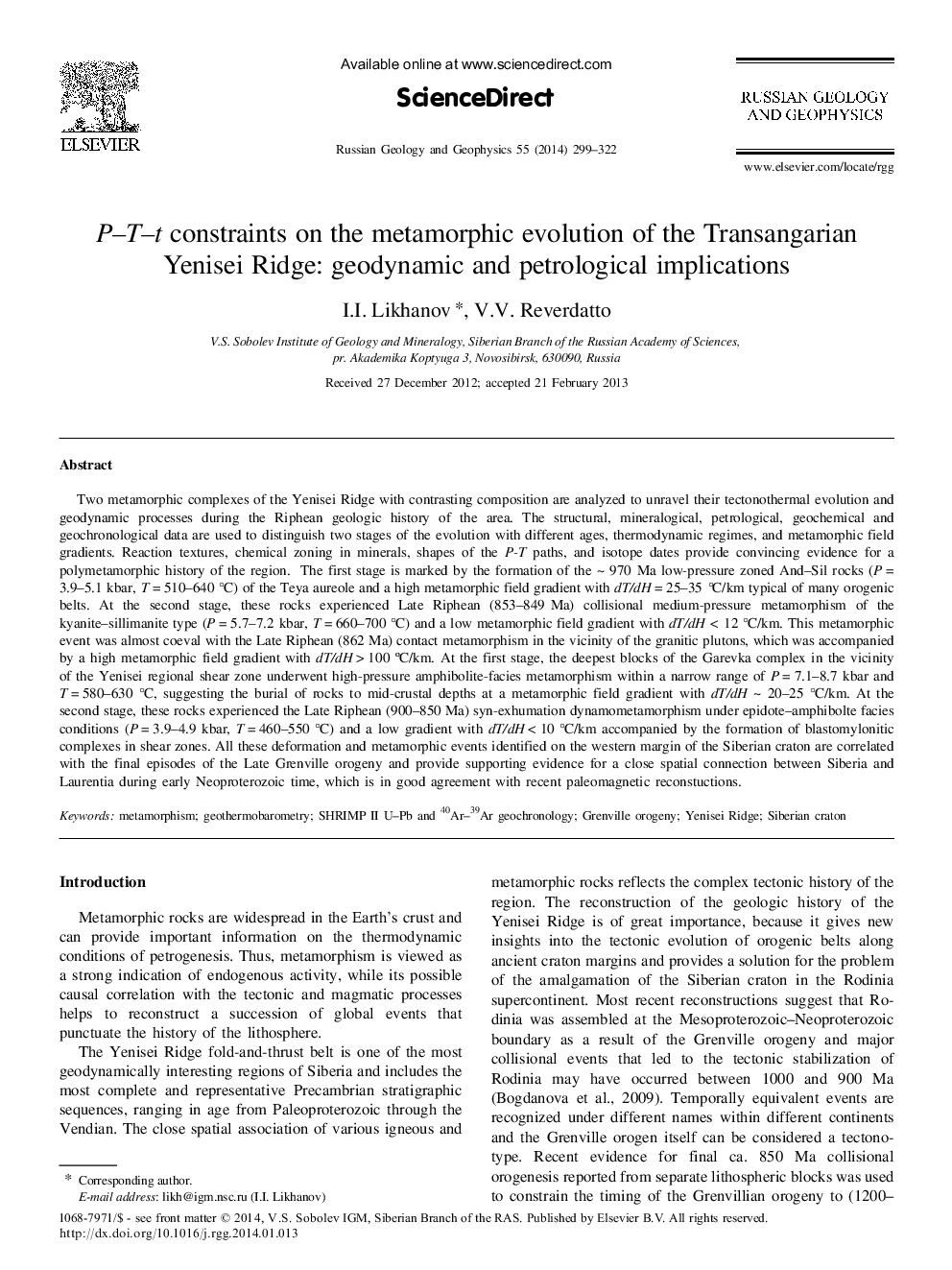| Article ID | Journal | Published Year | Pages | File Type |
|---|---|---|---|---|
| 4737353 | Russian Geology and Geophysics | 2014 | 24 Pages |
Two metamorphic complexes of the Yenisei Ridge with contrasting composition are analyzed to unravel their tectonothermal evolution and geodynamic processes during the Riphean geologic history of the area. The structural, mineralogical, petrological, geochemical and geochronological data are used to distinguish two stages of the evolution with different ages, thermodynamic regimes, and metamorphic field gradients. Reaction textures, chemical zoning in minerals, shapes of the P-T paths, and isotope dates provide convincing evidence for a poly metamorphic history of the region. The first stage is marked by the formation of the ~ 970 Ma low-pressure zoned And-Sil rocks (P = 3.9-5.1 kbar, T = 510–640 °C) of the Teya aureole and a high metamorphic field gradient with dT/dH = 25–35 °C/km typical of many orogenic belts. At the second stage, these rocks experienced Late Riphean (853–849 Ma) collisional medium-pressure metamorphism of the kyanite-sillimanite type (P = 5.7-7.2 kbar, T = 660–700 °C) and a low metamorphic field gradient with dT/dH < 12 °C/km. This metamorphic event was almost coeval with the Late Riphean (862 Ma) contact metamorphism in the vicinity of the granitic plutons, which was accompanied by a high metamorphic field gradient with dT/dH > 100 °C/km. At the first stage, the deepest blocks of the Garevka complex in the vicinity of the Yenisei regional shear zone underwent high-pressure amphibolite-facies metamorphism within a narrow range of P = 7.1-8.7 kbar and T = 580–630 °C, suggesting the burial of rocks to mid-crustal depths at a metamorphic field gradient with dT/dH ~ 20–25 °C/km. At the second stage, these rocks experienced the Late Riphean (900–850 Ma) syn-exhumation dynamometamorphism under epidote-amphibolte facies conditions (P = 3.9-4.9 kbar, T = 460–550 °C) and a low gradient with dT/dH < 10 °C/km accompanied by the formation of blastomylonitic complexes in shear zones. All these deformation and metamorphic events identified on the western margin of the Siberian craton are correlated with the final episodes of the Late Grenville orogeny and provide supporting evidence for a close spatial connection between Siberia and Laurentia during early Neoproterozoic time, which is in good agreement with recent paleomagnetic reconstuctions.
